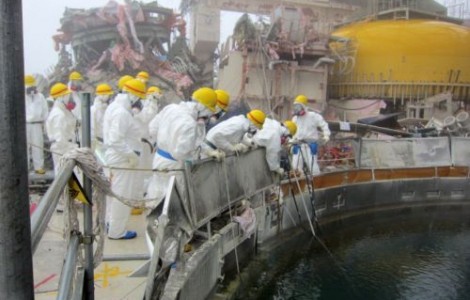 Today, three years have passed since the tragic day of March 11, 2011. On that day, Japan was hit by a magnitude 9,0 earthquake, followed by a devastating tsunami (or tsunami), which caused the serious accident at the Fukushima Nuclear Power Plant, in Japan. Three open-air fusion nuclear reactors were the most immediate result of this accident.
Today, three years have passed since the tragic day of March 11, 2011. On that day, Japan was hit by a magnitude 9,0 earthquake, followed by a devastating tsunami (or tsunami), which caused the serious accident at the Fukushima Nuclear Power Plant, in Japan. Three open-air fusion nuclear reactors were the most immediate result of this accident.
In the days, weeks and months following the nuclear accident, authorities “transmitted false information and withheld data about what was going on and the Japanese government increased the maximum allowable dose of radioactivity for workers at the plant from 100 millissieverts in five years to two hundred and fifty millissieverts a year," recalls Quercus, in a statement.
At the moment, the surrounding region is “unsuitable to inhabit within a radius of 20 km, given the high radioactivity that exists, and tens of thousands of people have been evacuated. Huge amounts of soil have been removed from vast areas, and that soil has to be treated as radioactive waste».
There are gigantic deposits of water that were used for cooling, which are constantly increasing, as this work is far from finished. Water leaks from these deposits are frequent, contaminating the soil, groundwater and the sea. Marine ecosystems are also contaminated, as is the entire food chain.
Over these three years there was a lot of information that was hidden, such as the exact amount of MOX in reactor #3; the state of the reactor cores and their location; the radioactivity rate of the 11 tons of water discharged into the Pacific Ocean; the number of tons of fuel disseminated by the explosions and the measures carried out by the international network for surveillance of radioactivity in the air.
Corium that moves underground is also one of the most serious problems that humanity has ever faced. The word “corium” designates the melted core magma of the reactors and the mass of fuels, fission products and various debris that the core fusion carries with it (such as plutonium and steel in the fusion tank). It is a term almost never uttered by the Japanese and international authorities who are in charge of nuclear management.
On this fateful anniversary, Quercus warns once again that “nuclear is not safe, it causes countless problems from uranium mining, during the operation of atomic reactors operating in plants such as Fukushima, until the end of its cycle, with management of waste that has to be kept for thousands of years and for which there is no safe and sustainable solution'.
“The option for nuclear fission is contrary to the precautionary principle and calls into question the ethical norm of transgenerational equity. In light of current knowledge, nuclear fission is not an acceptable energy solution, from the point of view of its impacts on the environment and human health», concludes the environmental association.

















Comments